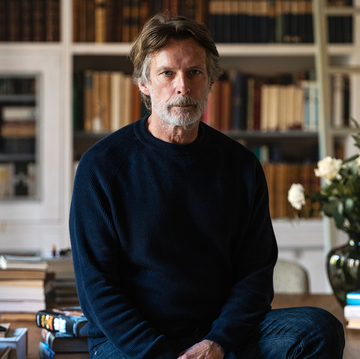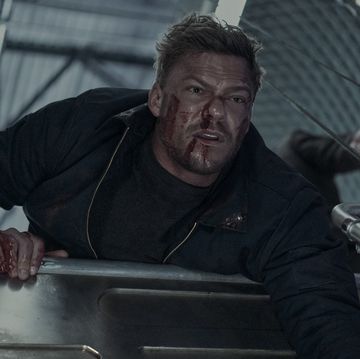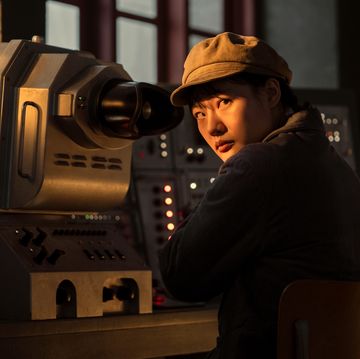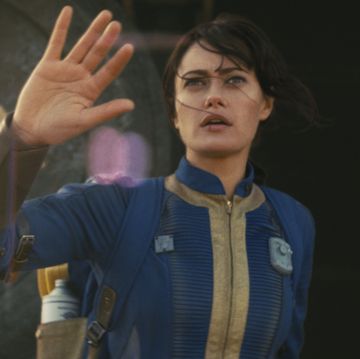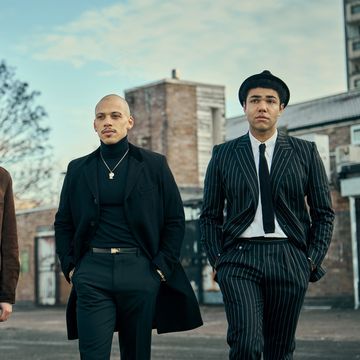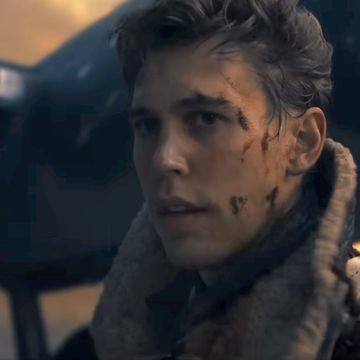We need to talk about Michael Cera. I didn't understand quite how much I'd missed his cherub face until he appeared in the fourth episode of Twin Peaks: The Return. Sitting atop a classic American motorcycle, donning a leather jacket and hat a la The Wild One, and doing his best-worst Marlon Brando impression, Cera's entry into the Twin Peaks universe goes down as one of the strangest things to happen in the new series to date. This in a pair of episodes that saw Agent Cooper floating on a box in space and later hitting all the jackpots at a casino—HellooOOOooo!
But I return to Mr. Cera, playing Lucy and Andy's son Wally Brando, speaking an ode the road, his dharma. There's just something about that scene—a digression into pure nonsense, extended to a breaking point, comprised of nothing more than back-and-forth shots of conversation and pauses between conversation. It's a scene so suited to Cera's brand of confidently stilted delivery, and still so utterly unnecessary, explaining what happened in a plotline from the original most of us had probably forgotten or would rather have forgotten. It's easy to imagine Lynch sitting behind the camera stifling laughter.
Last week, Entertainment Weekly published an interview with David Lynch, by Jeff Jensen, unpacking the first episodes of the new Twin Peaks. It's a worthwhile read for all sorts of reasons, but the following is easily the best exchange:
EW: There's a very strange new character in the Black Lodge, a talking tree, an evolution of The Man From Another Place, also known as the Arm (Michael J. Anderson, who did not return for the new series).
DL: Yes. Necessity is the mother of invention.
EW: The head on top — is it a talking brain, pituitary gland, or neuron?
DL: It's just a head.
EW: It looks like a brain to me.
DL: It's just a head.
EW: Well, you got a great performance out of the tree.
DL: Thank you.
Much of Jensen and Lynch's conversation carries on like this. Jensen pressing Lynch for clarification and revelation of intention. Lynch rebuffing with signs of disinterest in the interrogation. A lot of writing on Twin Peaks over the last couple of weeks has centered on the idea that Lynch's work is impossible to directly interpret, and that trying to find answers, puzzle-like, in the show fantastical flights is a futile effort. Any meaning we're to draw must be greater, more symbolic in nature, and ultimately impossible to discern for certain. There's pushback, of course, by those who love to solve every puzzle in the series; it's true that much of what happens in Twin Peaks does follow within a kind of logical framework tended by co-creator Mark Frost. Look to his book, The Secret History of Twin Peaks, to see just how deep that rabbit hole can go.
Missing in that conversation, though is a more simple fact: David Lynch is out to entertain. Sure, his version of entertainment involves completely unsettling his audience and leaving us all scratching our heads, but that's what amuses him, and it amuses us, too. That straightforward aim is how Lynch can get away with opening the third episode on a bizarre 15-minute sequence set in some new space in the Black Lodge with a blind woman talking unintelligibly, unknown banging on a door, and a trip to space. It's baffling, and it's meant to be baffling, because baffling means you sit up and take notice.
If Episodes 1 and 2 of the Twin Peaks: The Return signaled we were in for something very different from the new series, then Episodes 3 and 4 brought back a semblance of comfort. Unsettled comfort, but comfort still. It's not quite what it was, but old faces reappeared—hi, Agent Rosenfield, and FBI Chief of Staff Denise Bryson!—more time was spent in the town of Twin Peaks, and the comedic leaning of the original series were back in full force. There was Michael Cera's odd scene, as well as Hawk's continued hunt for the thing that's missing related to Agent Cooper, and of course Cooper's return to the world, re-learning how to interact with everything, and unwittingly being guided to win all the jackpots at a casino.
Bobby Briggs came back, now in uniform working for the sheriff's department, crying at the sight of Laura Palmer's class photo. Laura's theme swells, and the tears pour, and there's clear comedy in it, but tragedy as well. It's a play on a memory, an old dam of emotion bursting, heightened as only TV can do. Then there was Lynch himself as Agent Gordon Cole exclaiming, "What the hell?" at the sight of the ghostly figure in a photograph of the glass box in New York. "What the hell?" is right. Twin Peaks always blurred the lines of comedy, tragedy, and outright strangeness. These two episodes brought the balance back to exactly where we remember, though updated in surface style for the passage of time.
Contrasted with the first two episodes, though, it's a clear that Lynch isn't looking to offer us safe harbor. There's nothing about the four episodes taken as a whole that suggests we can rest assured knowing we're back where we were 26 years ago. That world is gone. It's changed. We'll see glimpses of it, memories, regurgitations—as Cooper's doppelgänger knows too well—but it won't be the same. The oddball randomness of a scene like the one with Michael Cera is bound to be what we're in store for. That is to say: the unexpected. And Lynch knows better than most these days, it's the unexpected that's often the most entertaining.







